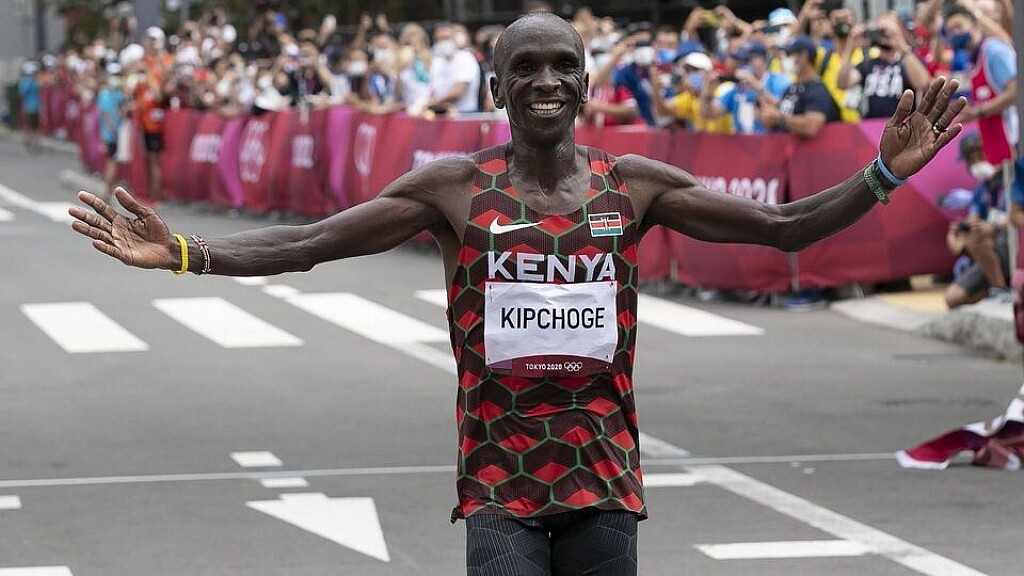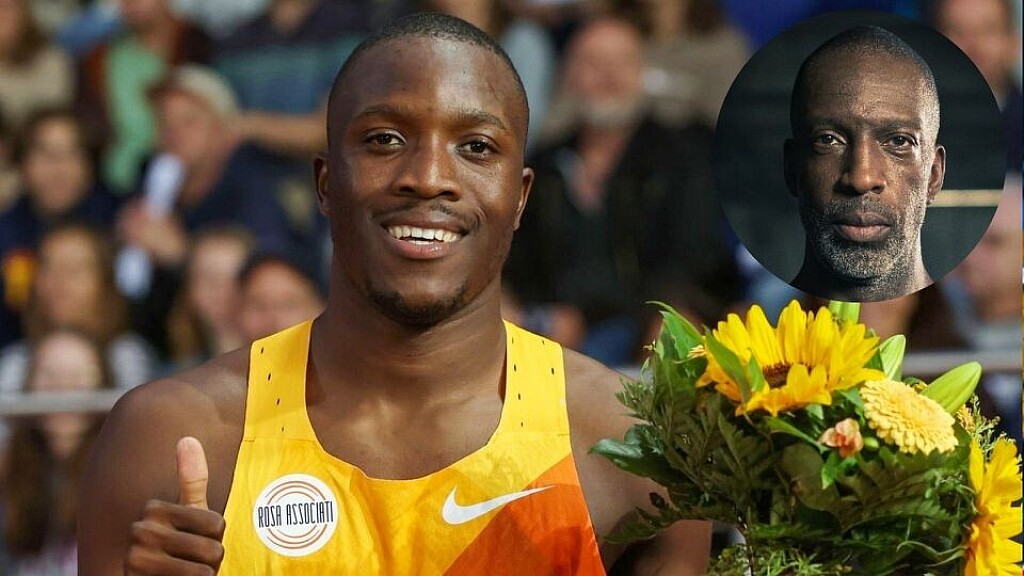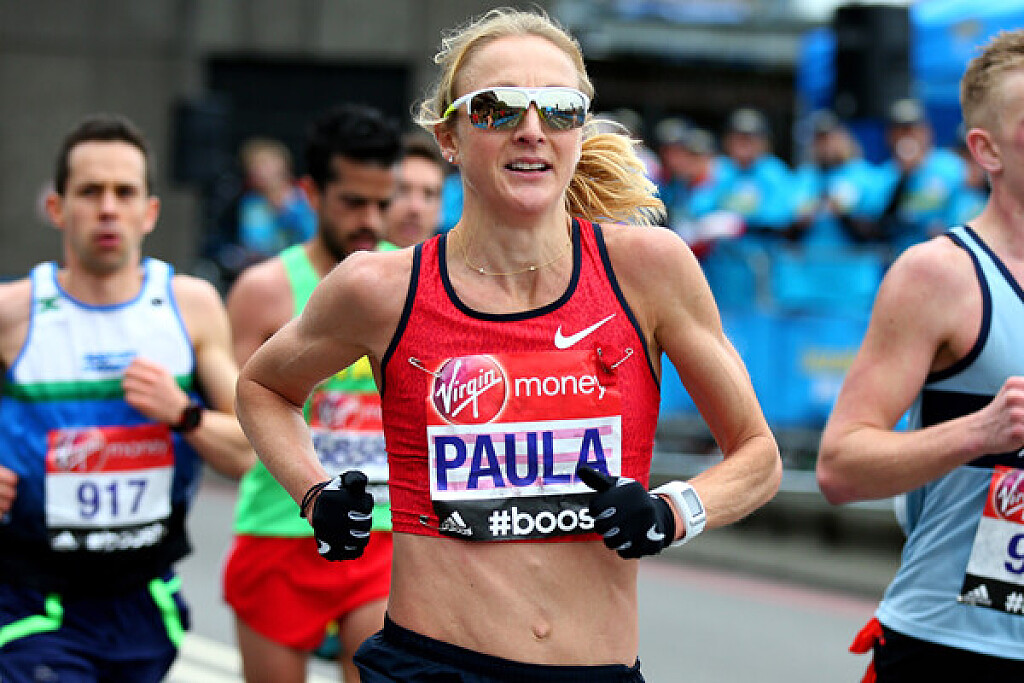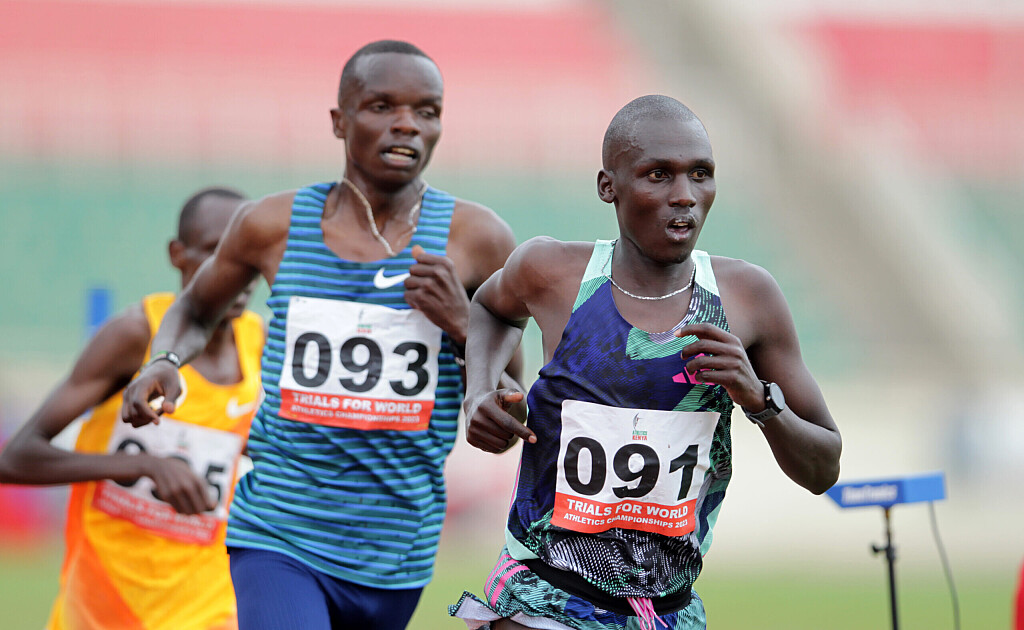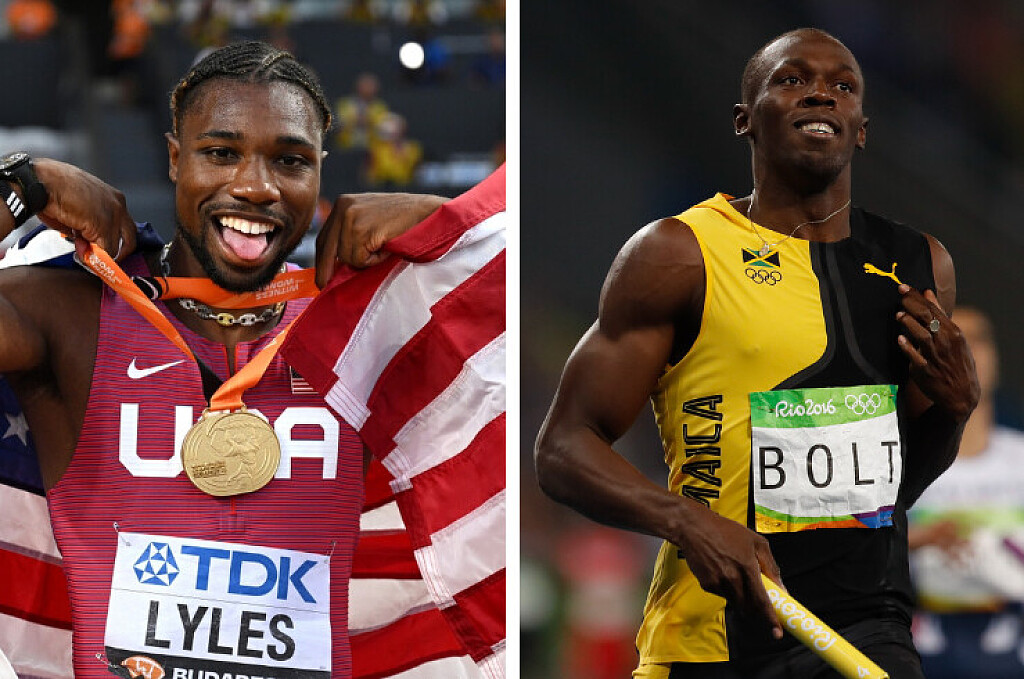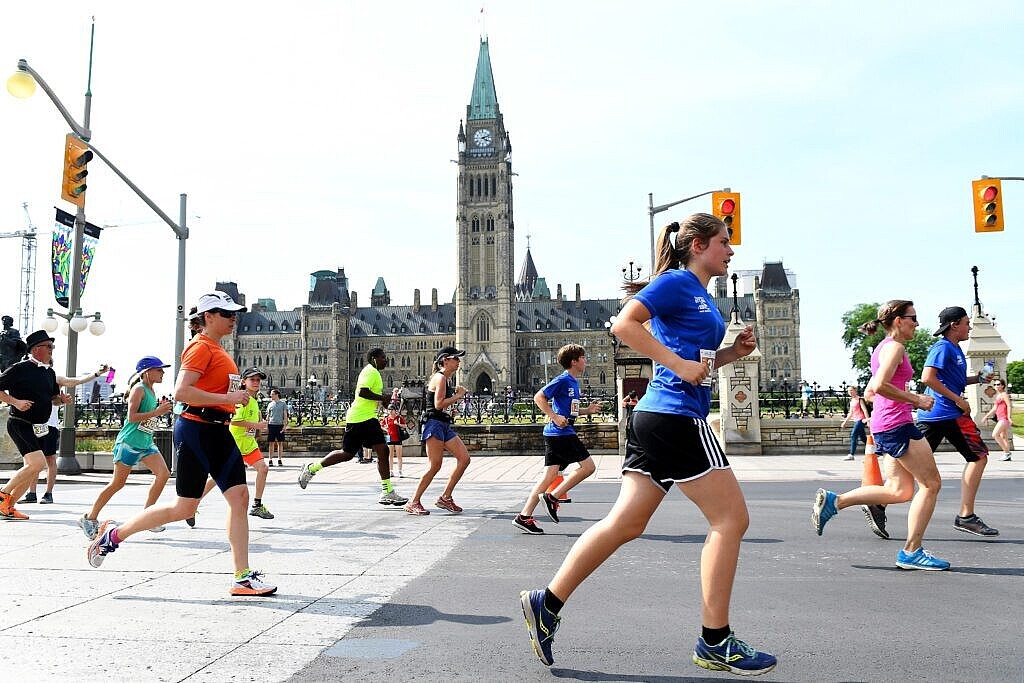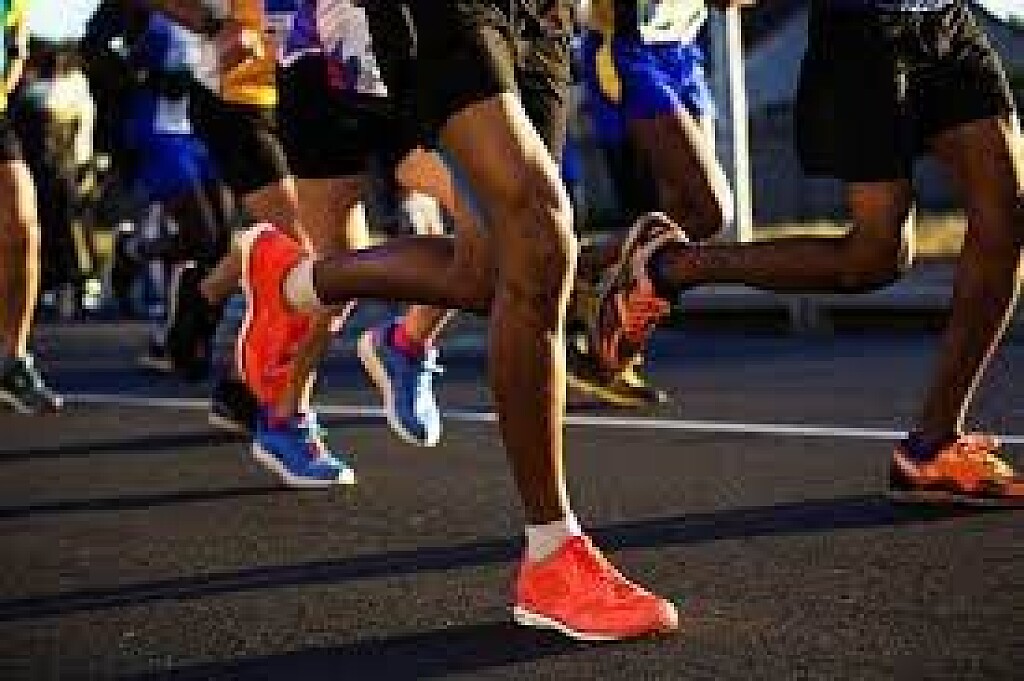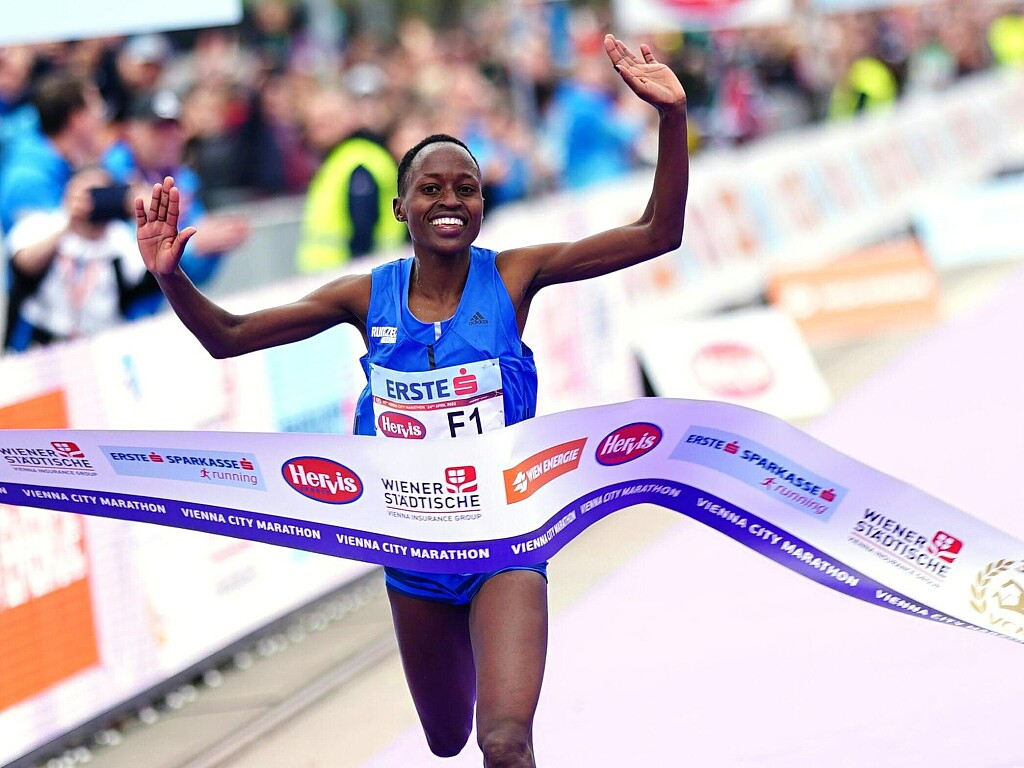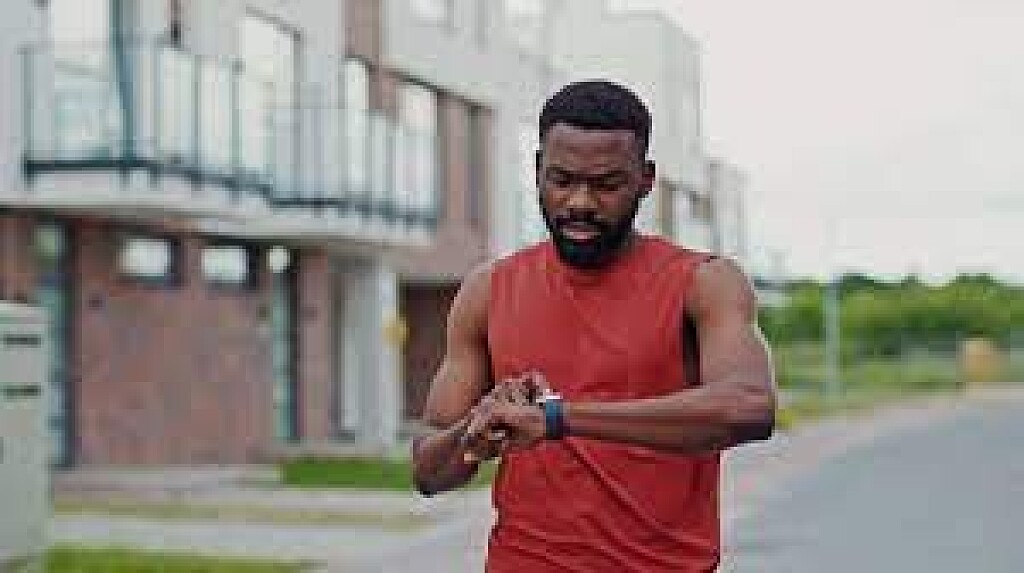Running News Daily
Top Ten Stories of the Week
3/30/2024
These are the top ten stories based on views over the last week.
Why Eliud Kipchoge is assured of his slot in Kenya’s Olympics team
Two-time Olympics champion Eliud Kipchoge’s recent form has seen some doubt whether he will be able to defend his title in Paris but Athletics Kenya looks set to have him on the team.
Olympic champion Eliud Kipchoge will definitely be at the Paris 2024 Games despite his indifferent form in his recent races.
Kipchoge has won one of his three marathons [Berlin 2023], coming after a sixth-place finish in Boston the same year, before a 10th placing in Tokyo this month.
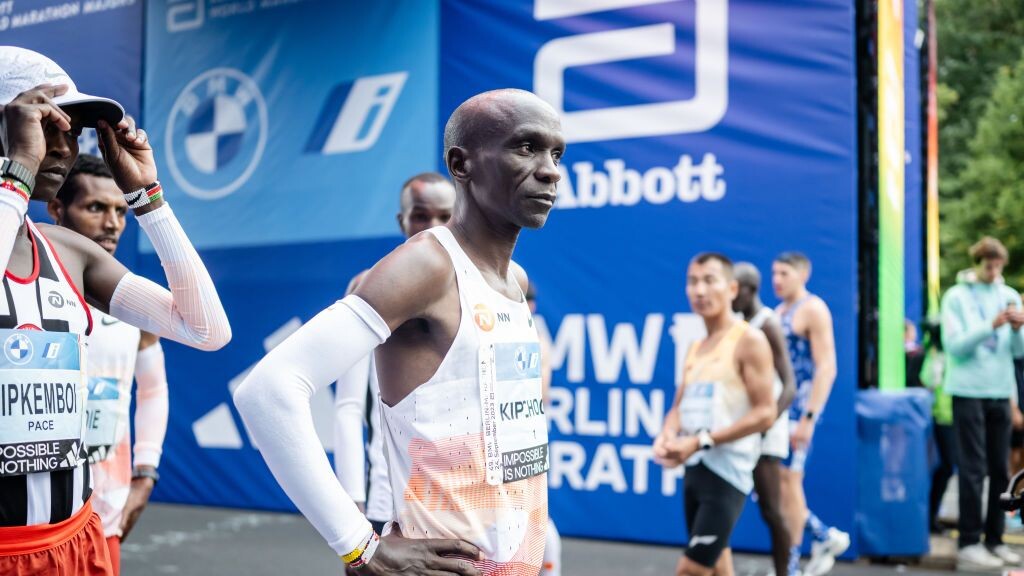
That has seen doubts emerge from some observers who feel the GOAT might not have enough to claim a third straight Olympics gold while others have even called for the 39-year-old to give way but athletics coach Julius Kirwa feels it would be ill advised to write him off.
“Kipchoge is good and we depend on him,” Kirwa, who is among those who will select Kenya’s final marathon squad to Paris, told Pulse Sports.
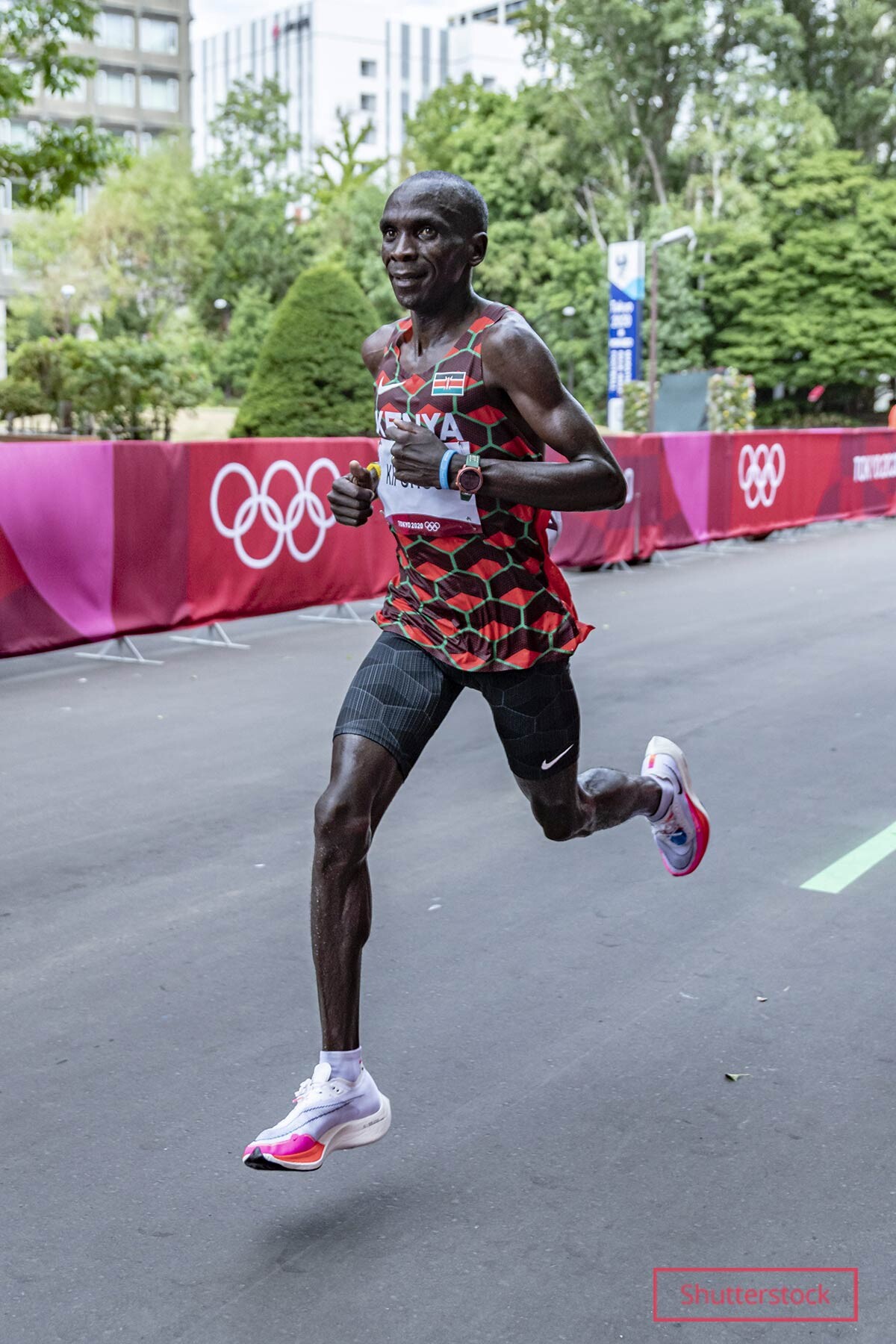
“We encourage him to ignore everything that is being said about him and only concentrate on representing the country. I know he is ready and capable of representing the country as he has always done,” added Kirwa.
Kirwa insists Kipchoge has to be on the plane to Paris due to his status and the fact the he is one of the most reliable athletes for Kenya even if emerging stars are threatening to dethrone him.
“Eliud is a defending champion and is always available to represent the country,” said the veteran coach. “We cannot say because there are others who have come and run better than him we are going to leave him out.”
“We give them an opportunity to represent the country based on knowledge, capabilities, strength and discipline, which is very important.”
Kipchoge was part of a strong 10-man provisional team unveiled last December that had the late Kelvin Kiptum, with 2024 Tokyo Marathon champion Benson Kipruto, Timothy Kiplagat and Vincent Ngetich, who finished second and third in Tokyo, Bernard Koech, two-time New York Marathon champion Geoffrey Kamworor, Cyprian Kotut, 2022 London Marathon champion Amos Kipruto and Titus Kipruto.
Following Kiptum’s demise, Athletics Kenya intend to add another name to the list before the final three are unveiled by May with the women’s team having defending champion Peres Jepchirchir, former world record holder Brigid Kosgei, Boston and New York Marathon champion Hellen Obiri, 2019 world champion Ruth Chepng'etich, 2024 Tokyo Marathon runners-up Rosemary Wanjiru, Joycilline Jepkosgei, Sheila Chepkirui, Judith Korir, Seley Chepyego and Sharon Lokedi.
(03/25/24) Views: 136Joel Omotto
Michael Johnson gives Letsile Tebogo 400m advise after hitting Olympics qualifying time
American sprint legend Michael Johnson has told Botswana sensation Letsile Tebogo what to do at the Olympics after he hit the 400m qualifying time for the Paris Games.
American sprint legend Michael Johnson has advised Botswana sensation Letsile Tebogo against signing up for the 400m at the Paris 2024 Olympics.
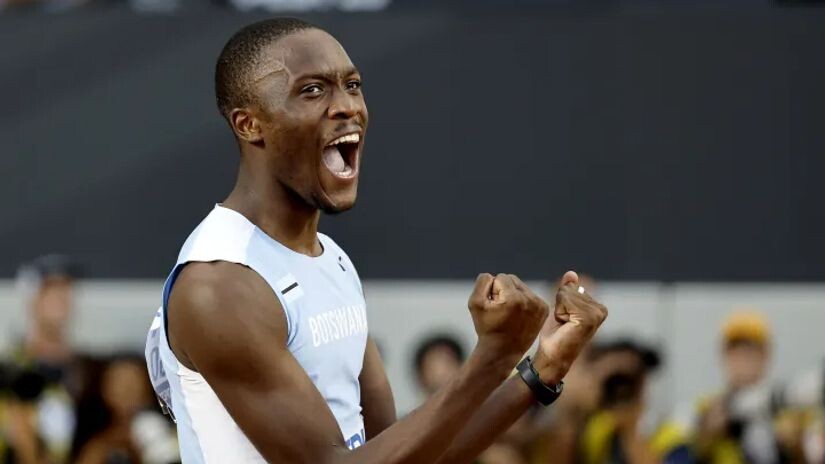
Tebogo hit the Olympic qualifying mark in 400m when he lowered his personal best to post an impressive 44.29 at the ASA Grand Prix in Pretoria, South Africa on Monday.
That has got many wondering if the world 100m silver and 200m bronze medalist will add the 400m onto his Olympics programme but Johnson, a two-time Olympic champion and record holder over the 400m, feels it would be a bad idea to do that this year.
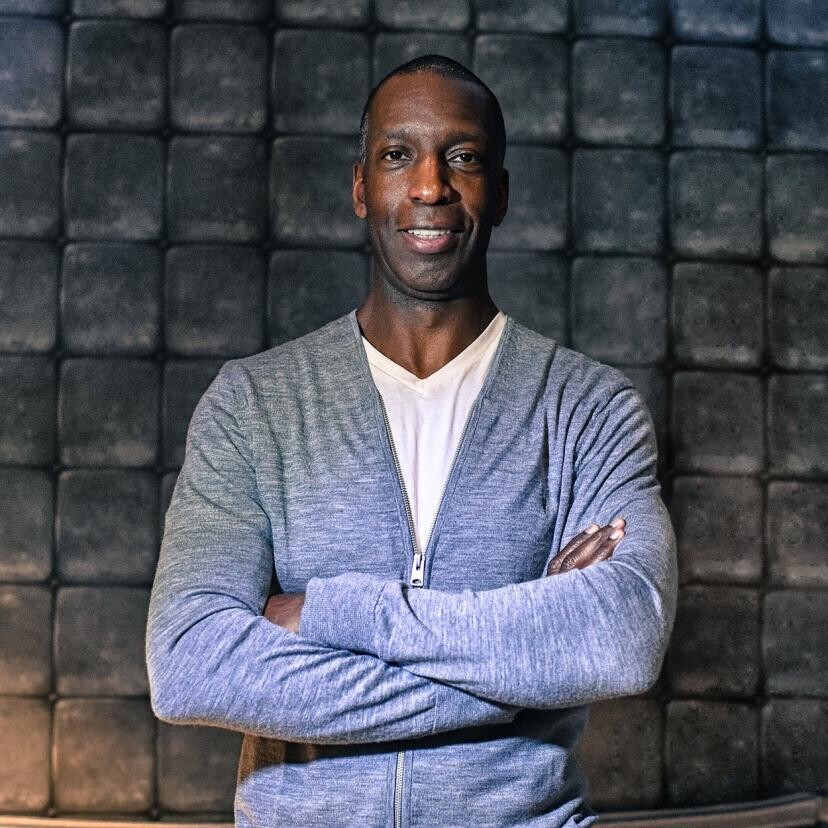
“100/200 or 200/400 double? Already a 100/200 world champs medalist, may be foolish to switch in an Olympic year,” Johnson posted on X.
While Johnson recognizes that the men’s 400m is not as strong now, he thinks 20-year-old Tebogo still has plenty of time to hone his skills over the distance before he makes a competitive attempt.
“Men’s 400 a bit weak recently but his training must change to run even low 44 in a final after rounds. At only 20, plenty of time to move to 400. 100/200 for Paris,” added Johnson, while advising Tebogo to stick to 100m and 200m at the Paris Olympics.
Johnson’s sentiments come days after reports in Botswana also suggested Tebogo does not intend to compete in 400m at the Paris Olympics and was just using the race to test his endurance.
Tebogo has been in fine form, smashing the 300m world record by running 30.69 in Pretoria in February, before the 44.29 in 400m in the same South African city this week.
"My plan is to rest for a week or two. My performance [on Monday] shows that the speed is there,” said Tebogo after Monday’s race.
“Everything is going according to plan. I want to compete in Diamond League Meets so that I get used to other top athletes. That will also assist me to be confident when I meet them at the Olympics.”
World champion Noah Lyles is seen as the favorite to claim gold in both 100m and 200m at the Olympics but 20-year-old Tebogo is among a host of rivals set to give him a run for his money, with the Botswanan not a pushover given his remarkable form and consistency.
(03/23/24) Views: 127Joel Omotto
Four exercises to build bulletproof knees
We know that running doesn’t wreck your knees (and might even make them stronger) but newer runners or those making a comeback occasionally experience some soreness, and the knee is one of the most common areas of injury for runners. The easiest way to keep knee pain at bay is to beef up the muscles around the knee joint.
Adding a handful of simple exercises to your routine will help your legs provide better support and alignment, giving your legs the oomph they need to keep going strong while preventing common injuries such as patellofemoral pain syndrome and runner’s knee. We have four exercises to help you get started.
Single-leg glute bridge
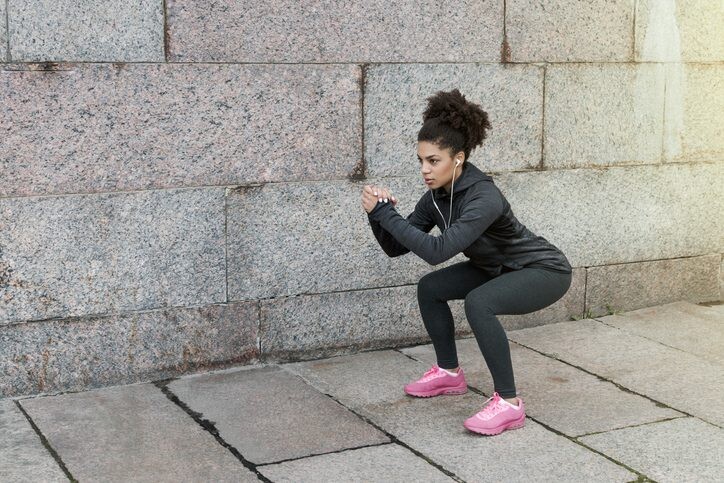
This exercise strengthens the glutes, hamstrings, and core while also improving hip stability and alignment.
Begin lying on the floor with your knees bent and hands by your side.

Engage your core and lengthen one leg out, keeping one foot on the floor. Push through your foot, slowly lifting your hips into a bridge position and keeping your one leg extended.
Single-leg glute bridge
This exercise strengthens the glutes, hamstrings, and core while also improving hip stability and alignment.
Begin lying on the floor with your knees bent and hands by your side.
Engage your core and lengthen one leg out, keeping one foot on the floor. Push through your foot, slowly lifting your hips into a bridge position and keeping your one leg extended.
Hold for a second at the top, squeezing your glutes and engaging your core muscles. Gently to the starting position. Aim for 10 repetitions, and then repeat on the other side.
1.- Forward lunges
Lunges engage the quadriceps, hamstrings, glutes, and calf muscles, and activate stabilizing muscles such as the hip abductors and adductors. They improve overall stability and reduce stress on the knees.
Stand with your feet hip-width apart.
Take a step forward with one leg and lower your body until both knees are at a 90-degree angle, hovering the back knee just above the ground.
Push off the front foot to return to the starting position and repeat with the other leg. Aim for five to 10 repeats to start. You can build resistance by adding sets, or by holding weights once you become comfortable.
2.- Step-ups with knee drive
Step-ups strengthen the muscles responsible for supporting the knee joint during weight-bearing activities like running and enhance the knee’s ability to withstand repetitive stress and maintain proper alignment, reducing the likelihood of overuse injuries.
Stand with feet hip-width apart, facing a step, box, or bench.
Step up with the right foot onto the box, and then drive the left knee up toward the chest. Aim for your hip and knee to form a 90-degree angle. Step back down and repeat on the other side. Aim for 3 sets of 10 reps on each side.
If you want more of a challenge, hold a light weight in the hand that is on the side doing the step-up (if you’re stepping up with your right leg, hold a weight in your right hand).
3.- Squats
Squats strengthen the quadriceps muscles which directly connect to the knee. Strong quadriceps provide the knee with more stability, thus reducing and preventing injury. Start with two to three sets of eight to 12 repetitions.
Stand with your feet shoulder-width apart, toes slightly turned out, and your chest up.
Lower your body by bending your knees and pushing your hips back as if you’re sitting in a chair, keeping your weight on your heels.
Lower until your thighs are parallel to the ground, then push through your heels to return to the starting position, squeezing your glutes at the top.
As strength improves, you can gradually increase the number of sets, repetitions, or resistance (such as adding weights) to continue challenging the muscles and promoting knee strength.
4.- Single-leg mini squat
This exercise mimics the motions of running, engaging all the major muscle groups involved in running to build strength and stability while It also challenges balance and building proprioception skills.
Begin by standing on one leg with your knee slightly bent. Keep your chest up, shoulders back and core engaged for balance.
Slowly lower your body by bending the knee of the leg you’re standing on, imagining that you’re sitting back in a chair. Keep your back straight, and go as low as you can (doesn’t need to be far!) while maintaining control.
Hold for a few seconds to challenge your balance and stability, and then push through the heel of the standing leg to return to the starting position. Try five-10 reps on each side to start.
As with any new activity, use caution and patience as you incorporate these into your routine. Feel free to modify by reducing the number of repetitions if you are struggling; if you’re very comfortable with lower-body strength training, add resistance by holding weights as you do the exercises.
(03/25/24) Views: 122
Keeley Milne
Paula Radcliffe to open Brighton Marathon
Three-time London Marathon winner Paula Radcliffe and Paralympic gold medallist David Weir are the official starters of this year’s Brighton Marathon weekend.
Radcliffe, who set a new world record for the London marathon in 2003, will signal the start of the race in East Sussex on 7 April.

She said the start of a marathon was “inspirational” and conveyed “the warmth, empathy and power of the marathon family”.
Brighton Miles, an accessible running event on 6 April, will be launched by wheelchair athlete Weir.

About 13,000 people are expected to run in this year’s Brighton Marathon, which is now in its 15th year.
“I’m delighted to be coming back to Brighton to start the 2024 Brighton Marathon,” said Radcliffe, who is an ambassador for Children with Cancer UK.
Weir praised the inclusivity of the Brighton Miles event, saying: “No matter your age, ability or disability, the Brighton Miles is for you.”
Entries for the Brighton Miles and the 10k are still available, however the Brighton Marathon is sold out.
(03/23/24) Views: 121Zac Sherratt
Daniel Simiu targets historic victory at Okpekpe Race amidst high expectations
Daniel Simiu aims to defend his title and make history at the Okpekpe 10km Road Race in Nigeria.
World Half Marathon silver medallist, Daniel Simiu, is setting his sights on making history at the upcoming Okpekpe International 10km Road Race, scheduled for May 25 in Okpekpe, Edo State in Nigeria.
Following his record-breaking win last year, where he set a new course record of 28:28, Simiu is not only looking to defend his title but also to become the first man to successfully do so in the history of the Okpekpe race.
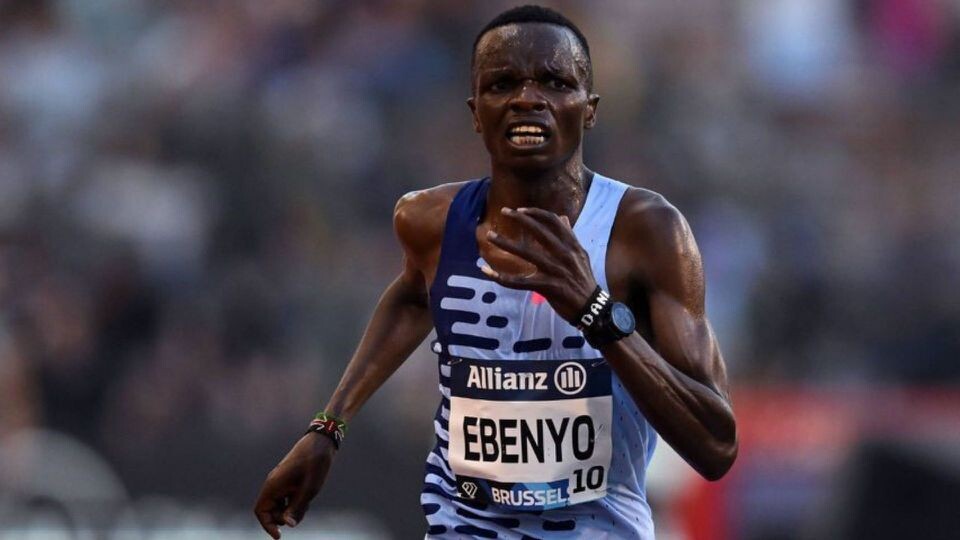
"I am interested in returning to Nigeria to run at the Okpekpe race. Nigeria is like my second home,” the 28-year-old athlete remarked as per The Guardian.
When asked about the possibility of breaking his own course record and potentially becoming the first man to run under 28 minutes at Okpekpe, Simiu remained modest yet hopeful.
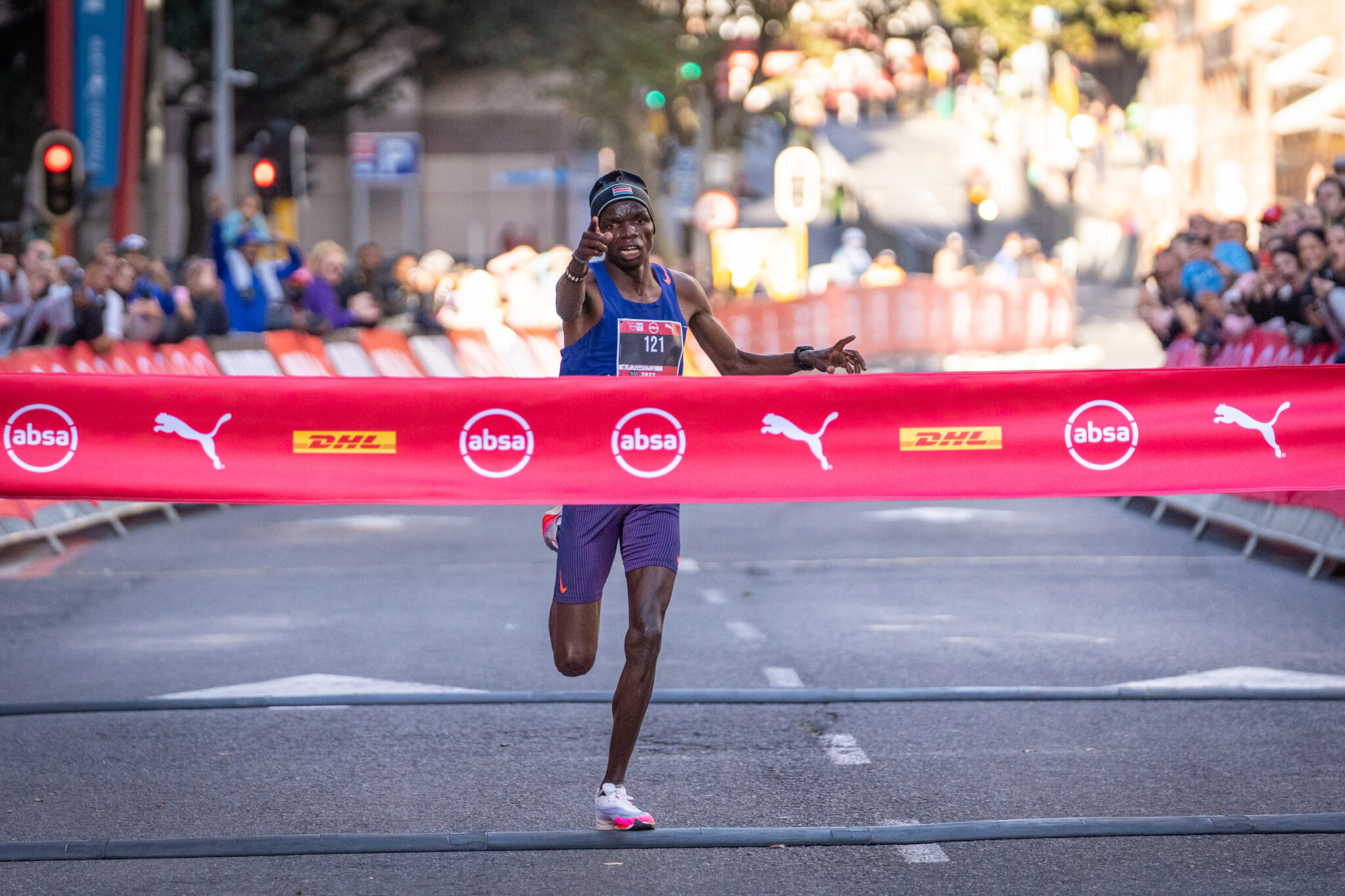
“Maybe I will try,” he said, leaving fans wondering if this year’s race will witness another groundbreaking performance from the Kenyan.
Since clinching the Okpekpe title, Simiu’s career has been on an impressive trajectory.
He went on to secure a 10,000m silver medal at the World Athletics Championships in Budapest, Hungary, and added a half marathon silver medal at the World Road Running Championships in Riga, Latvia, to his accolades.
His season started with a victory at the 67° Campaccio-International Cross Country, followed by a dominant performance at the National Police Cross-country Championships and Sirikwa Classic Cross-country.
This year marks the 10th anniversary of the Okpekpe Road Race, and organizers are promising an event filled with glamour and entertainment, aiming to make it the best edition yet.
“The technical and administrative organisation of the event have been applauded by World Athletics with the elevation of the event to a gold label status after its return from a two-year COVID-induced absence,” highlighted race director, Zack Amodu.
(03/25/24) Views: 117Festus Chuma
The possibility is there- Usain Bolt discusses chances of Noah Lyles breaking his 200m world record
The world's fastest man Usain Bolt has opened up on the possibility of Noah Lyles breaking the 200m world record this season.
The world’s fastest man Usain Bolt, has for the first time opened up about the possibility of three-time World champion Noah Lyles breaking his 200m world record.
Bolt set the 200m world record of 19.19 at the 2009 World Championships in Berlin, Germany where he also set the 100m world record of 9.58, with both records yet to be broken.
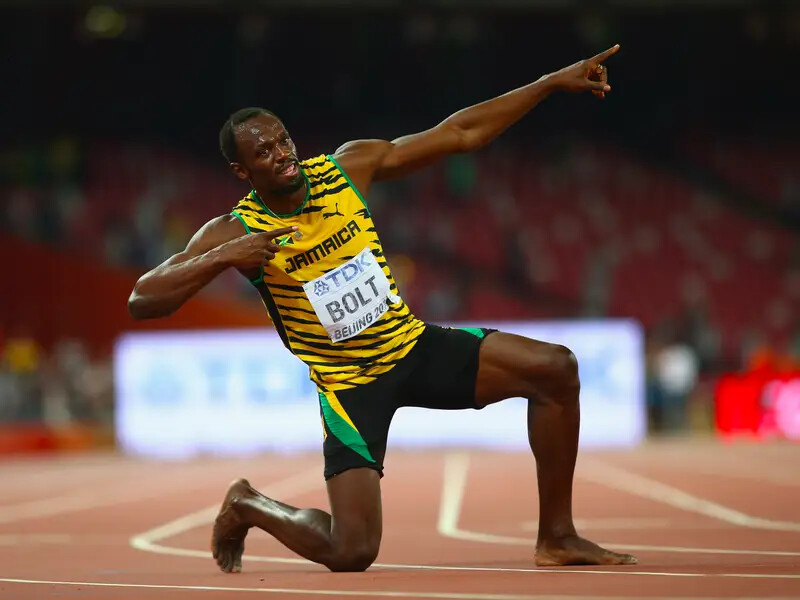
However, Lyles, the third-fastest man over the half-lap race wants to shatter the world record and make history this year. Lyles has become very vocal about going after the record and Bolt believes that the American is capable of breaking the record if he works on some things.
In an interview, the multiple Olympic champion admitted that there is a lot of competition in the 200m with the rise of other sprinters like wunderkind Letsile Tebogo and Erriyon Knighton, who are also forces to reckon with.
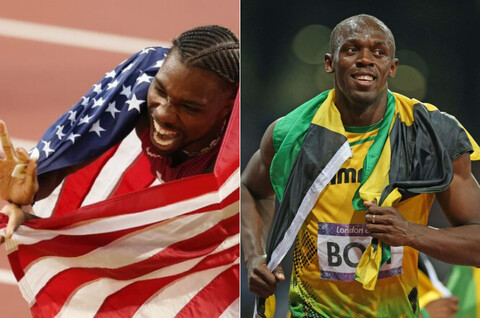
However, he admitted that it takes a lot of work to break a world record and if Lyles has to do it, he needs to put in more effort.
“I think the guys are really doing well and it’s intense…it’s not going to be easy because I think Noah feels like it was easy running two events but it wasn’t.
“I’ve said it before and I’m going to repeat that it’s never easy running back-to-back events and then going to break a world record because the body runs out of energy.
“I think the possibility is there because he came close to the world record at the World Championships.
“I feel like if he corrects a few things that I won’t say, he could get better because the possibility is there. I won’t tell you how to break the world record,” he said in an interview.
Lyles’s Personal Best time at the moment stands at 19.31 and he explained how he has been thinking about the 19.19 set by Bolt.
In a recent interview with CNN, Lyles said: “He was the fastest man ever to do it and soon, it’ll be me. When it was time to show up, he showed up, he got it done. I’m kind of more the guy who likes to assert his dominance throughout the whole year.”
(03/22/24) Views: 114Abigael Wuafula
Usain Bolt, Noah Lyles
Tamarack Ottawa Race Weekend: celebrating diversity and improving accessibility
Tamarack Ottawa Race Weekend works hard to create an environment where athletes from all walks of life feel valued, supported and empowered.
Tamarack Ottawa Race Weekend has a rich history of promoting diversity, accessibility and family-friendly participation. Over the years, the event has taken significant steps to ensure that all athletes feel welcome and empowered regardless of their abilities or backgrounds. From creating separate divisions for wheelchair athletes to introducing family-friendly race options and supporting women’s participation, Tamarack Ottawa Race Weekend has consistently championed inclusivity and celebrated the achievements of its diverse participants.
A history of accessibility and inclusivity
From the early years, the race organizers recognized the importance of accessibility and implemented measures to accommodate participants with disabilities. These included accessible washrooms and aid stations and properly cleared routes. By addressing these accessibility touchpoints, Tamarack Ottawa Race Weekend became a pioneer in making running events more inclusive.
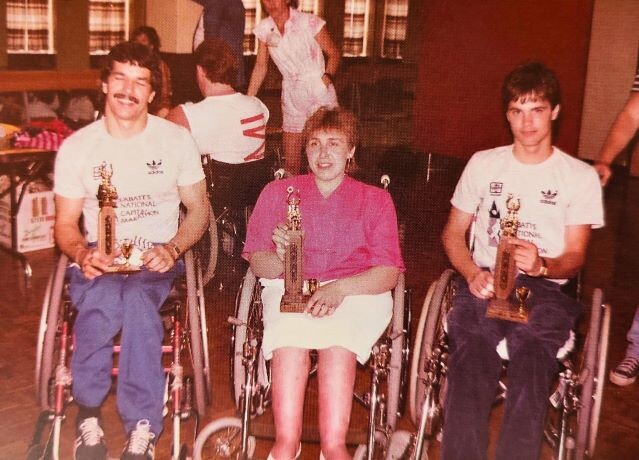
1975: Eleanor Thomas became the first female finisher, with a time of 3:27:28.
1979: Lou Mulvihill became the first wheelchair participant in Tamarack Ottawa Race Weekend. The following year, he was joined by four other athletes with disabilities, marking the beginning of the event’s commitment to inclusivity.
1983: Wheelchair athletes were given their own separate division, resulting in increased participation and recognition. Rick Hansen became the first official winner in this category. Additionally, Jacques Pilon, a blind athlete and gold medalist in the 1980 Blind Olympics, participated with a guide runner. Pilon’s inclusion paved the way for individuals living with invisible disabilities.
1998: The Tamarack Ottawa Race Weekend introduced a 2K and 5K run and walk to encourage family participation.
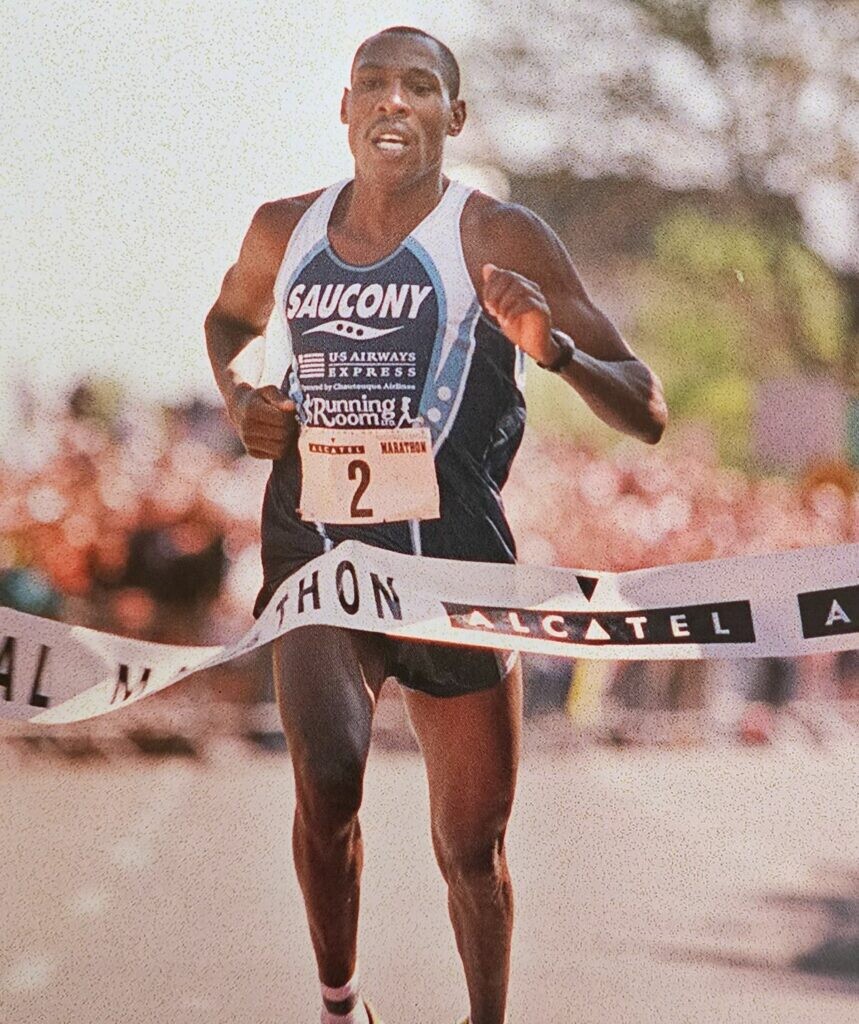
2001: Joseph Nderitu became the first African and person of color to win the marathon, marking the beginning of the elite era.
2011: Visually impaired athlete Ron Hackett completed his first of more than 16 marathons in Ottawa with the guidance of Tim Scapillato. Their successful partnership demonstrated the power of support and collaboration in enabling athletes with disabilities to excel.
2017: Andrew Press and Team LiquidGym spearheaded efforts to make Tamarack Ottawa Race Weekend more accessible for athletes using ALinkers (a mobility device).
2021: Tamarack Ottawa Race Weekend expanded gender categories to include male, female, non-binary and “prefer not to disclose.”
2022: Run Ottawa invited support runners to assist participants with all types of physical disabilities under the Adaptive Athlete Program.
2023: Tamarack Ottawa Race Weekend celebrated 18 visually impaired or blind participants, each accompanied by dedicated guides. The event also extended the Adaptive Athlete program to participants living with invisible disabilities, such as emotional or mental health challenges, allowing them to participate with support runners or guides. The race organizers fostered this inclusivity through partnerships with Achilles Ottawa, an ambassador program connecting visually impaired athletes with supportive runners.
Adaptive-athlete-friendly entry and exit routes were also added in 2023 to ensure barrier-free entry and exit for all participants.
Women in the Ottawa Marathon
The journey toward inclusivity also involves fostering women’s participation in the Ottawa Marathon. In 1975, Eleanor Thomas became the first female finisher, highlighting the drive to provide equal opportunities for all genders.
In 1983, there was a 7:1 ratio of men to women participating in the marathon, by 2023, more than 50 per cent of all registered participants in the Tamarack Ottawa Race Weekend were women.
Inviting and accessible for families
Currently, the Ottawa Kids Marathon and stroller-friendly 2K, 5K and 10K races are part of the race weekend, alongside the marathon and half-marathon. The Kids Marathon program lets children experience running a marathon by completing short segments over a few weeks or months, culminating in their final 1.2K leg on event day.
In 2024, the Ottawa Kids Marathon, 2K and 5K events will remain affordable, unaffected by price increases. This pricing strategy ensures that these family-friendly events are accessible to a diverse range of participants, irrespective of their abilities, ages or financial backgrounds.
Tamarack Ottawa Race Weekend also acknowledges the importance of accommodating families with infants. The event’s organizers have initiated conversations with new parents and other events to discuss ways of removing barriers and improving accessibility for families by considering feeding schedules. While still in the early stages of development, this initiative strives to create a supportive and inclusive environment for families participating in the race weekend.
Enhancements in 2023
The Adaptive Athletes program at Tamarack Ottawa Race Weekend continuously evolves to prioritize inclusivity and accessibility. In 2023, successful initiatives included the establishment of a dedicated tent near the start line for Adaptive Athletes and their support runners/guides/family, provision of secure wheelchair parking and delivery, distribution of cooling towels and water for Adaptive Athletes on the 2K course, a specialized Adaptive Athlete recovery area for post-race relaxation, an accessible race kit pick-up table and specially-designed race bibs to be worn on the back of an Adaptive Athlete and their guide or support runner to raise awareness and encourage understanding among participants.
Additionally, the race organizers collaborated with local organizations and community groups to establish a mentorship program for individuals from underrepresented communities. This initiative aimed to encourage participation in running and provide the necessary support to overcome potential barriers.
The 2023 race weekend featured a dedicated Diversity and Inclusivity speaker session. This panel discussion celebrated athletes’ unique identities and stories by promoting multiculturalism, engaging in conversations about inclusion and showcasing inspiring individuals who have made significant contributions to the running community.
Looking ahead to 2024
Building on the progress made in 2023, Tamarack Ottawa Race Weekend continues its commitment to improving accessibility and diversity in the upcoming year. A key focus for 2024 will be further expanding the mentorship program and establishing partnerships with more local organizations and underrepresented communities.
The organizers will also continue to offer a barrier-free start- and finish-line experience for participants who want that service and will continue to ensure aid stations are set up to be accessible for all athletes.
In 2024, Tamarack Ottawa Race Weekend aims to foster a sense of belonging for all participants by celebrating the intersectionality of identities, such as race, gender, age and ability. Through increased representation, awareness campaigns and ongoing collaboration, Tamarack Ottawa Race Weekend endeavours to create an environment where athletes from all walks of life feel valued, supported and empowered.
(03/25/24) Views: 114Brittany Hambleton
Three workouts to help you decimate your half-marathon goals
Effective pacing is critical for a successful half-marathon finish, yet many runners struggle to find the right balance between starting too fast and fading in the later stages of the race. Race-pace workouts provide an opportunity to fine-tune pacing strategies, by practicing maintaining a consistent pace over various distances and terrain. Through trial and error in training, runners can identify their optimal race pace and develop a solid pacing plan for race day.
Renowned coach and author Greg McMillan explains on his website that he prescribes several goal-pace workouts for the athletes he coaches to determine if their hoped-for race pace is achievable—if not, he uses the workouts to help them figure out a more attainable goal. Here’s how to get started.
Workout 1

McMillan suggests that athletes do this workout about eight weeks before their race. He says that while this session can feel like a shock to this system for some runners, it’s important to stick with it.”The first goal pace workout often feels tough, but you’ll receive a big mental and physical boost after simply completing this workout.”
Warm up with 10 minutes of easy running.
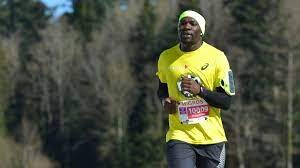
Run 2–3 miles (roughly 5K) at goal half-marathon pace, with 2–3 minutes recovery jog between repeats.
Cool down with 10 minutes of easy running.
Workout 2
Try scheduling this workout about four weeks before your race.”By the time you get to this workout, you should find that the first repeat is comfortable and it’s only toward the end of the second repeat that you begin to feel fatigue,” says McMillan.”If you struggle to hit the pace even in the first repeat, then it’s time to adjust your goal pace.”
Warm up with 10 minutes of easy running.
Run 2 X 4 miles (roughly 6.5K) at goal half-marathon pace, with 2–3 minutes recovery jog between repeats.
Cool down with 10 minutes of easy running.
Workout 3
McMillan suggests athletes schedule this final race-pace workout two to three weeks out from their race (before their taper).”This final goal pace run should feel like a mini version of the half-marathon,” he says. McMillan says that runners should feel very comfortable on the first three to six kilometers of the workout; past the halfway point, it should feel mentally challenging to hold the pace, but another one to three kilometers should feel possible.
Warm up with 10 minutes of easy running.
Run 6–8 miles (10-13K) at goal pace.
Cool down with 10 minutes of very easy running.
If you’re able to run near goal pace for all three of these workouts, you can head into your race feeling confident. If you’re struggling to hit your targets, McMillan suggests adjusting your goals—you may only need to adjust by a few seconds per kilometer.
Make sure to follow any harder effort or speedwork with a very easy running day or a recovery day.
(03/23/24) Views: 110Keeley Milne
Kenyans Leonard Langat and Vibian Chepkirui will return to defend their Vienna Marathon titles
Kenyans Leonard Langat and Vibian Chepkirui will return to defend their Vienna Marathon titles, while there are three men on the start list who have broken 2:06 and five women featuring personal bests of sub 2:25.
With regard to these personal records it will be strongest line-up in the history of the Vienna City Marathon which will see its 39th edition next week. Including races at shorter distances more than 31,000 runners have registered for Austria’s biggest running event, a World Athletics Marathon Label Road Race.
Kifle had a fine year in 2021: He was third in Enschede, 14th in the Olympic marathon in Sapporo and then 6th in Valencia, where he ran his PB. With his personal record the Eritrean is a little faster than Vienna’s course record of 2:05:41 by Ethiopia’s Getu Feluke in 2014.
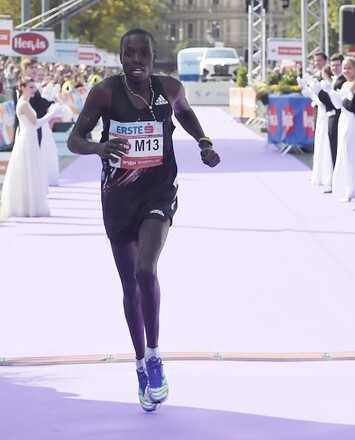
Abdi Fufa of Ethiopia is the third athlete in Vienna’s line-up who has run sub 2:06. A year ago he was second in Siena’s elite only race with 2:05:57.
It looks a tough task for Leonard Langat to defend his title in the Austrian capital. The Kenyan improved to 2:09:25 in Vienna last September. But with this PB he is only the eighth fastest athlete on the start list.
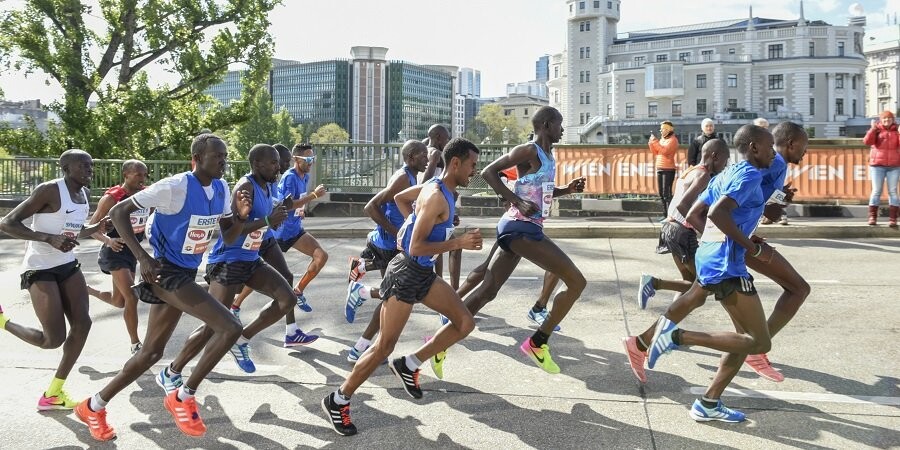
Unfortunately there were a number of cancellations from elite runners recently. Among them are Mekuant Ayenew and fellow-Ethiopian Derara Hurisa, who had originally crossed the line first in last year’s Vienna City Marathon. However he then had to be disqualified for wearing illegal racing shoes and Leonard Langat became the winner.
The fastest runner on the women’s start list is Caroline Kilel, who ran 2:22:34 when she took the Frankfurt Marathon back in 2013. While the Kenyan did not reach these sort of times recently there are other athletes who showed promising last year.
Defending champion Vibian Chepkirui may only be number five on the list with her PB of 2:24:29. However she did run this time last September in Vienna in very warm conditions.
Afterwards the Kenyan said that she could have been at least two minutes faster in more suitable conditions. Chepkirui could be capable of attacking the course record of fellow-Kenyan Nancy Kiprop who was the winner in 2019 with 2:22:12.
Kenya’s Ruth Chebitok and Ethiopia’s Sifan Melaku are number two and three on Vienna’s start list with PBs of 2:23:29 and 2:23:49 respectively.
Sheila Jerotich of Kenya is a contender for victory as well. She took the Istanbul Marathon in November, improving to 2:24:15.
“We are very happy that we were able to surpass the mark of 30,000 entries. Compared to our comeback race in September 2021 this is a nice step forward. We feel the enthusiasm of the runners,“ said Kathrin Widu, the General Manager of the Vienna City Marathon.
There has never been an Eritrean winner in the history of the Vienna City Marathon which had its first edition back in 1984. This may change next week though since the two fastest entrants are from this country: Goitom Kifle and Oqbe Kibrom feature personal bests of 2:05:28 and 2:05:53 respectively.
(03/22/24) Views: 109ATAF
Four quick quality workouts for busy runners
Training for an important race, but running short on time? Even the most dedicated athletes occasionally find themselves scrambling to fit quality training sessions in between life commitments. Here are four short but efficient workouts you can pull off during your lunch hour, and still manage to have a quick shower.
Short and sweet tempo session
Whitney Heins, coach and founder of The Mother Runners, schedules this one for the athletes she coaches when they need the most bang for their buck.

Warm up with 5-10 minutes of easy running.
Run 20 minutes at a moderately hard effort (you should be able to speak in short sentences, but you wouldn’t want to have a conversation).

Cool down with 5-10 minutes of easy running.
If you have more time, Heins suggests lengthening the tempo part of the run up to 30 minutes, or doing 2 by 20-minute intervals with a 2-minute rest in between.
Hill repeats
Even if you’re not training for a hilly race, a hill session is a great way to get your heart rate up fast and your legs working hard.
Warm up with 10-20 minutes of easy running.
Find a moderate-grade hill that is at least 200 meters long.
Run 5-12 repeats at a hard, sustained effort. Adjust your effort depending on the length of your hill—if the hill is only 200 meters long, run it at a 5K effort. For a longer hill, aim for a 10K effort—find a tough pace, but one that you can maintain up the entire hill.
Run downhill at a very easy pace to recover.
Cool down with 10 minutes of easy running.
Sub-race pace session
This is a great marathon-prep workout, but if you’re training for a different distance, simply adjust the race pace accordingly.
Warm up with eight minutes of easy running.
Run 4 x 1 mile at 10–20 seconds faster than your goal marathon race pace, with 45 seconds recovery jog after each interval.
Cool down with eight minutes of easy running.
Race pace repeats
This workout is a favorite of Luke Humphrey, coach and author of Hansons Marathon Method. As you gain strength, Humphrey suggests limiting recovery time to one minute.
Warm up with 10 minutes of easy running.
Run 5 x 5 minutes at marathon pace, with a 2.5-minute recovery jog between repeats.
Cool down with 5 minutes of easy running.
Remember to take an easy running or recovery day after any hard workout or speed session (even a short one).
(03/22/24) Views: 106Keeley Milne


